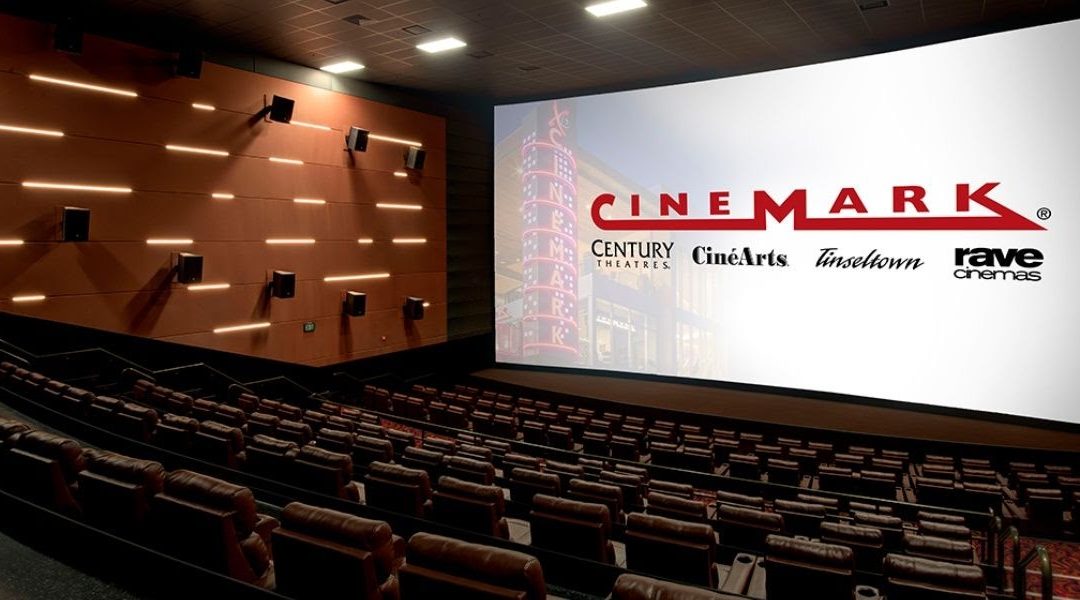With most of the world shut down as a result of the ongoing COVID-19 epidemic, many businesses are struggling with the difficulty in deciding not only when to reopen, but how to reopen. Movie theaters are no exception; while many major chains do plan on starting back up once the pandemic dies down, there is still the question of how to get people into seats. Even ignoring the concerns people would have about whether or not it’s still safe to go to the movies, a bigger issue is what exactly theaters can show. Most of the year’s biggest blockbusters have been pushed back extensively to later in the year, if not the following year. Depending on when theaters reopen, there could be a huge demand from moviegoers, but no supply to satisfy them. So how can theaters keep customers satisfied and make money when there aren’t many new movies to show?
In the case of one major theater chain, Cinemark, the answer is simple: show movies that aren’t new.
Last week, Cinemark announced that it intended to reopen many of its locations starting in July. With many major movies being held back until at least later in the month, the theater chain’s CEO Mark Zoradi suggested that they could play what he referred to as “library movies”, films that had been previously released to cinemas. With two or three weeks between Cinemark’s anticipated reopening date and the release of the first few major Hollywood productions, Zoradi claims that these older films would serve as a decent placeholder until they are able show more newer releases.
While this is certainly one strategy that could prove to be effective in getting people back into theaters, one question still remains: what exactly does Zoradi mean when he says “library movies”?
One kind of “library movie” would be a film that had been previously released, but just recently enough to remain in the public consciousness. These kinds of films would have come out in the past decade or two (between 2000 and 2019), and include such films as the “Harry Potter” franchise, James Cameron’s “Avatar”, and the abundance of films part of the Marvel Cinematic Universe.
This was the approach that China had intended to take when it originally planned to reopen its theaters. Earlier this month, the Chinese government announced that it would let a handful of theaters open their doors so people could start going back to the movies. Upon this announcement, it was rumored that many of these theaters would show recent blockbusters (both domestic and foreign) in order to peak the interest of those still hesitant about going back outside. This plan ultimately fell through, however, when China ordered that all theaters remain closed until further notice. Then again, when the time does come for theaters to reopen, there’s a strong chance that older films will be shown during the first few weeks back open.
On the other hand, when Zoradi refers to “library films”, could it be possible that he could be talking about films that are even older, to a point where they can be called “classic”? How far back could the Cinemark CEO be thinking? To the 1990’s with films like “Titanic” and “Jurassic Park”? The 1980’s with the likes of “Raiders of the Lost Ark” and “Ghostbusters”? In fact, why rule out films from as far back as the 1930’s, such as “Gone with the Wind” or “Frankenstein”?
None of this would be new territory for Cinemark. Throughout most of the 2010’s, Cinemark ran a program called the Cinemark Classic Series. Each theater participating with the program would show a specific classic film once or twice throughout the week, repeating the process the following week with a different film. The series quietly came to an end at the beginning of 2018, but recent events suggest Cinemark could fall back on this strategy in order to reacquaint people with the movie theater experience. If successful, the chain could even revive the Classic Series for a longer duration than just the first few reopening weeks.
Despite ending its Classic Series however, Cinemark still continued to show classic movies every now and then. This was mainly due to its collaboration with Fathom Events, a distribution company that specializes in theatrical releases for non-traditional programming, especially live events. Re-releases of classic movies are quite common among Fathom’s releases. In fact, earlier this year, before it had to stop as a result of the nationwide theater closures, Fathom had teamed up with Turner Classic Movies to show classic films like “An American in Paris” and “King Kong” on the big screen (in the case of the latter, its first big-screen showing in over sixty years).
Perhaps the biggest concern at the moment is choosing the right films. If Cinemark does begin to show more classics on their screens, then they would have to select relatively well-known films that people would want to experience on the big screen. Depending on the films, this could prove to be an immensely profitable venture.
While not common, some re-releases have proven to be quite successful in attracting moviegoers. In 2015, a one-day consecutive showing of the “Back to the Future” trilogy earned a worldwide total of $4.85 million, making it the #1 grossing film of the day. In 2019, a Fathom Events release of “The Wizard of Oz” earned $2 million during its original screening dates, a gross so high that additional dates were quickly added.
Even foreign classic films have been proven to be popular when released into theaters. In December 2016, Fathom Events and North American distributor GKids released the iconic Hayao Miyazaki film “Spirited Away” in commemoration of its 15th anniversary. The re-release proved to be such a huge success that the following year saw the creation of Studio Ghibli Fest, a monthly program in which one of the many films of Studio Ghibli, including “My Neighbor Totoro” and “Howl’s Moving Castle” would be shown in theaters for a limited time.
Arguably the most impressive re-release in recent memory, however, came in 2011, when Disney released a 3D version of “The Lion King”, at one time the highest grossing animated film, for what was originally intended to be just one week. However, when “The Lion King” topped the box office that weekend with over $30 million (the first re-release to do so since “Star Wars Episode VI: Return of the Jedi” in 1997), Disney continued its run well past its original ending date, and when it did finally reach its conclusion, “The Lion King” had earned over $94 million, the most of any re-release in the past decade.
All these examples prove that re-releases can be a big money-maker if pulled off correctly. This, of course, would have to take several variables into consideration: the film chosen, the time of release, and how long the film will be available to see. Any of these variables can make or break a re-release, but if there’s one thing working in the favor of a potential future re-release right now, it’s the timing. Once theaters (and the rest of the national economy) start to open back up, there will be millions of people seeking some kind of entertainment outside their homes. Movie theaters are a notable source of such entertainment, and with so few new releases that would be available to see, there’s plenty of room for a classic to step in and make itself available for theatrical viewing.
This is what Cinemark would be hoping for when the time comes to reopen its theaters, but even without the current state of the world, there’s no reason why Cinemark (and other theater chains for that matter) shouldn’t make the most of showing classic cinema in theaters. Many of the films considered the greatest of all time are thought of as such for good reason, and the theatrical experience can play an important role in helping a film establish classic status. Older audiences can feel a sense of nostalgia watching a favorite film the same way they did when they were younger, and younger audiences who hadn’t seen the film before can watch the film in the exact same experience as those who had seen the film upon its initial theatrical release. There’s much to appreciate about the advancements of film with each passing year, yet sometimes one must be willing to show appreciation for the past in order to help create a better path for the future, and the world of cinema is certainly no exception.
Like the Maltese Falcon, these films are the stuff that dreams are made of, and the theatrical experience can be a significant contributor in achieving this.




